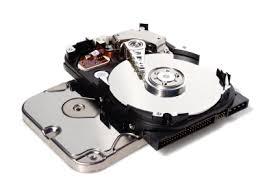In an era dominated by technological advancements and a growing concern for sustainable living, the quest for energy efficiency has become paramount. As individuals and communities seek ways to reduce their carbon footprint and cut down on utility bills, the spotlight is increasingly turning towards innovative solutions. Among these, electricity-saving devices are emerging as game-changers, offering households the means to liberate themselves from excessive energy consumption and contribute to a greener, more sustainable future. The term electricity liberation may sound futuristic, but it is a concept grounded in the present. With the rapid development of technology, electricity-saving devices have evolved to become accessible, affordable, and highly effective. These devices are designed to optimize energy usage within homes, ensuring that every watt counts. One of the key players in the electricity-saving device arena is the smart home technology sector. Smart thermostats, for example, learn the patterns of household heating and cooling needs, adjusting temperatures automatically to minimize energy waste.
These devices not only contribute to electricity savings but also enhance comfort and convenience for homeowners. Similarly, smart lighting systems use sensors and automation to ensure that lights are only on when needed, reducing unnecessary energy consumption. Another category of electricity-saving devices focuses on improving the efficiency of appliances. Energy-efficient refrigerators, washing machines, and air conditioners are equipped with advanced technologies to deliver the same performance with significantly lower energy consumption. These power pro energy saver reviews not only help homeowners save on electricity bills but also play a crucial role in reducing overall energy demand, thus lowering the environmental impact. In addition to smart technology and energy-efficient appliances, power strips and smart plugs are simple yet effective tools in the electricity liberation arsenal. These devices allow users to easily disconnect multiple electronics at once, preventing phantom energy consumption when devices are in standby mode. By cutting off power to unused devices, households can make substantial strides in reducing energy waste. Furthermore, renewable energy sources such as solar panels and wind turbines are becoming increasingly popular components of electricity liberation initiatives.
These technologies empower homeowners to generate their electricity, reducing reliance on traditional power grids and fossil fuels. As the cost of renewable energy systems continues to decline, more households are adopting these sustainable solutions, not only saving money in the long run but also contributing to a cleaner planet. Electricity liberation is not just about cutting costs it is a collective effort to address the global energy crisis and mitigate the environmental impact of excessive energy consumption. As individuals take charge of their electricity usage through the adoption of energy-efficient technologies, the cumulative effect becomes a significant force for positive change. From smart home technologies to energy-efficient appliances and renewable energy sources, individuals now have a myriad of options to reduce their carbon footprint and save on electricity bills. As these innovations become more widespread, the vision of electricity liberation is not just a futuristic concept but a tangible and achievable reality for households around the world. Embracing these technologies is not only an investment in personal financial savings but also a commitment to a sustainable and environmentally conscious future.






